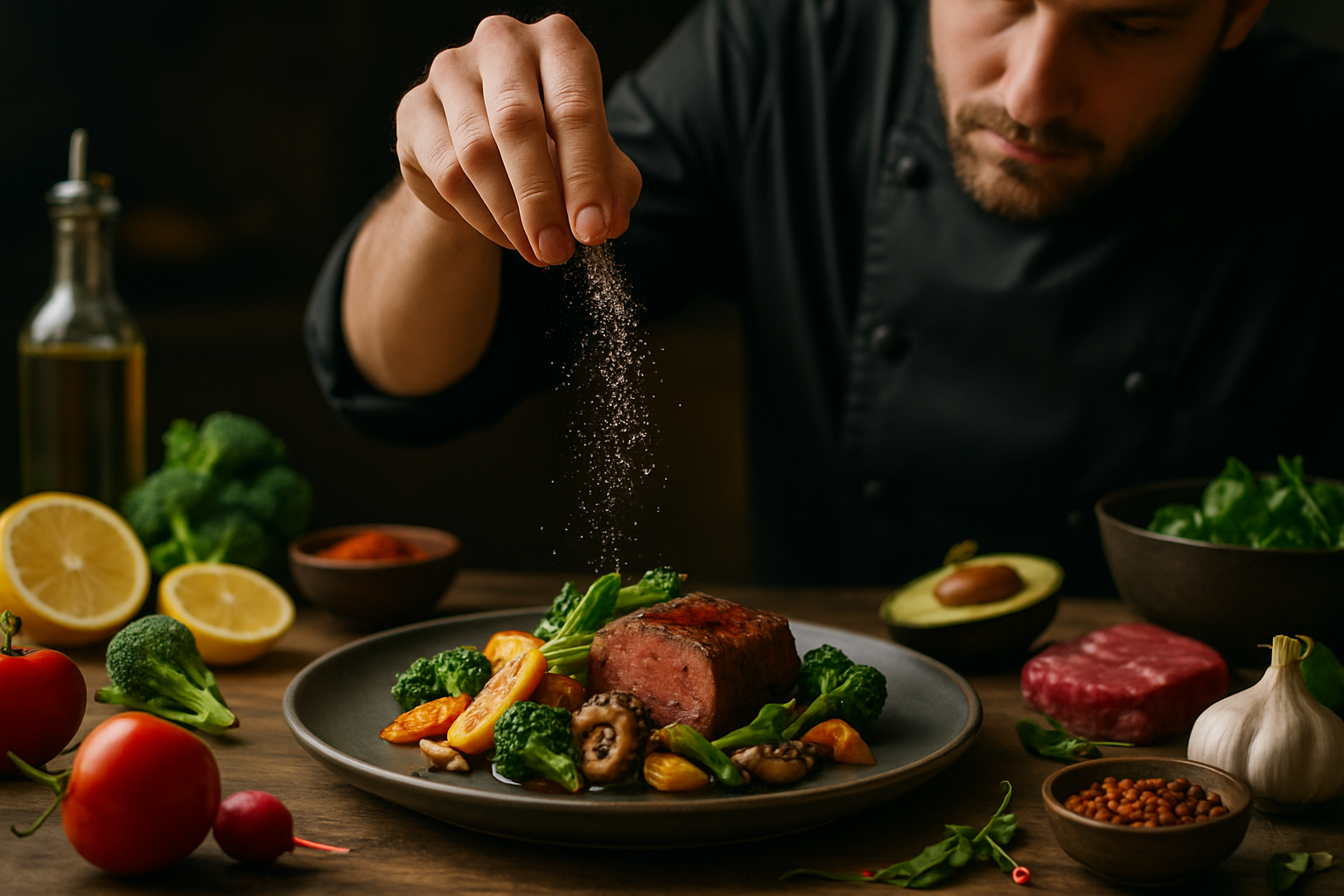Culinary Alchemy: Transforming Everyday Ingredients
Dive into the enchanting world of culinary alchemy, where ordinary ingredients metamorphose into extraordinary creations. This article explores innovative techniques and unexpected flavor combinations that will revolutionize your approach to cooking. From humble pantry staples to forgotten produce, discover how to elevate simple elements into gastronomic marvels that will delight your palate and impress your guests.

Transformative Cooking Techniques
Mastering transformative cooking techniques can elevate even the most basic ingredients. Sous vide, for instance, allows for precise temperature control, resulting in perfectly cooked meats and vegetables with intensified flavors. Smoke infusion can add depth to unexpected ingredients like fruits or cheeses, creating complex flavor profiles. Fermentation is another powerful tool, capable of transforming simple vegetables into tangy, probiotic-rich delicacies. Consider experimenting with molecular gastronomy techniques like spherification to create caviar-like bursts of flavor from fruit juices or sauces. Even simple techniques like browning butter or caramelizing onions can add layers of complexity to your dishes. The goal is to approach familiar ingredients with fresh eyes and innovative methods, unlocking new dimensions of taste and texture.
Reinventing Leftovers and Scraps
In the spirit of sustainability and creativity, reimagining leftovers and food scraps is a crucial skill for the modern chef. Transform day-old bread into a luxurious bread pudding or crispy croutons for salads. Vegetable peels and trimmings can be turned into flavorful stocks or dehydrated into crispy garnishes. Overripe fruits are perfect for jams, compotes, or as natural sweeteners in baked goods. Even coffee grounds can find new life as a flavorful rub for meats or a rich addition to chocolate desserts. The key is to view these items not as waste, but as ingredients with untapped potential. By applying different cooking techniques and pairing them with complementary flavors, you can create entirely new dishes that are both delicious and sustainable. This approach not only reduces food waste but also challenges you to think creatively about ingredient utilization.
The Art of Plating and Presentation
The visual appeal of a dish is crucial in elevating the dining experience. Mastering the art of plating can transform simple ingredients into stunning culinary masterpieces. Start by considering color contrasts and textures when composing your plate. Use negative space to create visual balance and draw attention to key elements. Experiment with different plating styles, from rustic and organic to sleek and geometric. Incorporate edible flowers, micro-greens, or colorful vegetable purees to add visual interest and flavor accents. Play with height and dimension by stacking elements or using unconventional serving vessels. Remember that garnishes should be both beautiful and functional, adding to the overall flavor profile of the dish. With thoughtful presentation, even the most humble ingredients can be elevated to fine dining status, delighting both the eyes and the palate.
Fusion Cuisine: Blending Culinary Traditions
Fusion cuisine offers endless possibilities for culinary innovation. By blending techniques, ingredients, and flavor profiles from different culinary traditions, you can create unique and exciting dishes. Consider combining the spices of Indian cuisine with Italian pasta dishes, or incorporating Japanese umami flavors into classic French sauces. The key to successful fusion is understanding the fundamental principles of each cuisine and finding harmonious ways to blend them. Start with familiar dishes and gradually introduce elements from other culinary traditions. For example, try adding miso to a traditional risotto, or use lemongrass and coconut milk in a classic chicken pot pie. Be mindful of maintaining balance and respecting the integrity of each culinary tradition. When done well, fusion cuisine can create entirely new flavor experiences that transcend cultural boundaries.
Useful Tips for Culinary Alchemy
• Always taste as you go, adjusting seasoning and flavors throughout the cooking process.
• Keep a culinary journal to record your experiments and successes.
• Invest in quality ingredients – even simple dishes can be elevated with high-quality components.
• Don’t be afraid of failure – some of the best culinary discoveries come from mistakes.
• Learn the principles of flavor balancing: sweet, salty, sour, bitter, and umami.
• Experiment with different textures to add interest to your dishes.
• Use herbs and spices to add depth and complexity to simple ingredients.
• Master basic cooking techniques before diving into more advanced methods.
• Seek inspiration from diverse cultures and cuisines.
• Practice mindful eating to truly appreciate the nuances of flavor in your creations.
In conclusion, culinary alchemy is about more than just cooking – it’s a mindset that encourages creativity, experimentation, and a deep appreciation for the transformation of ingredients. By embracing these principles, you can turn everyday meals into extraordinary culinary experiences, delighting your senses and those of your guests. Remember, the kitchen is your laboratory, and every meal is an opportunity for delicious discovery.





